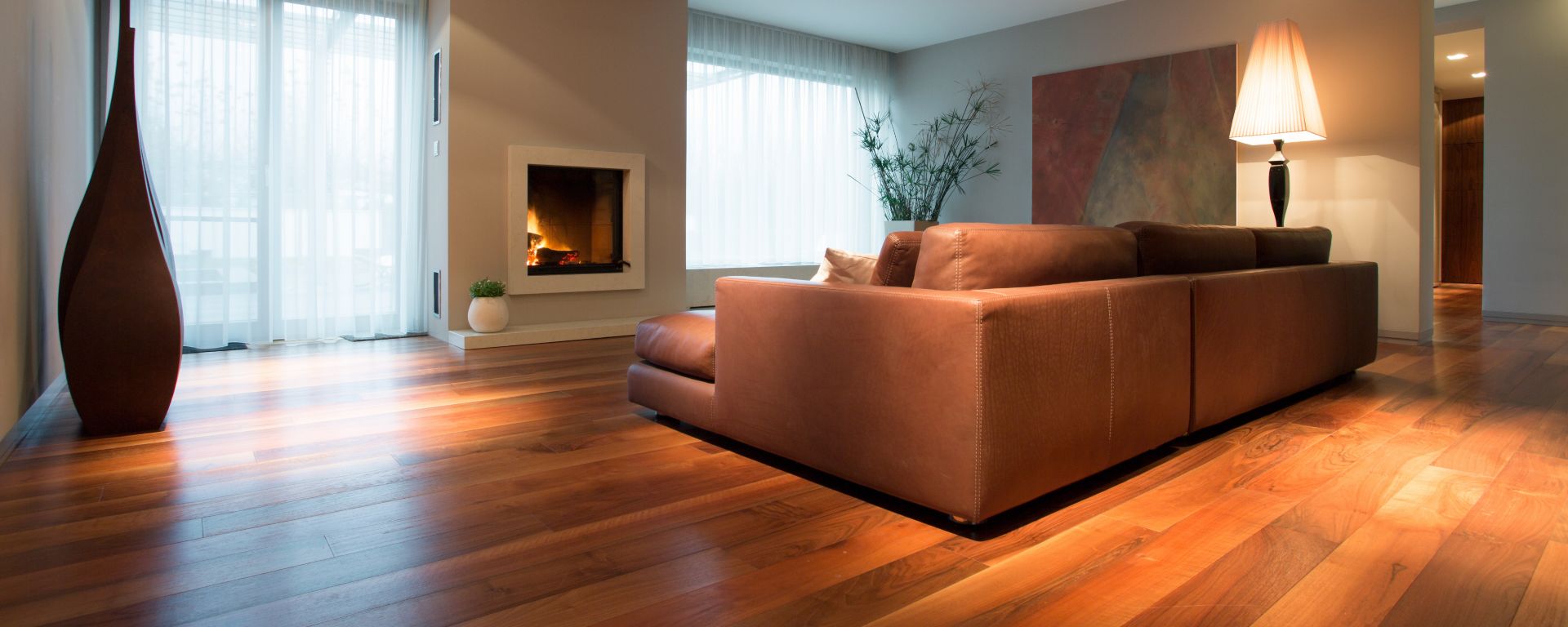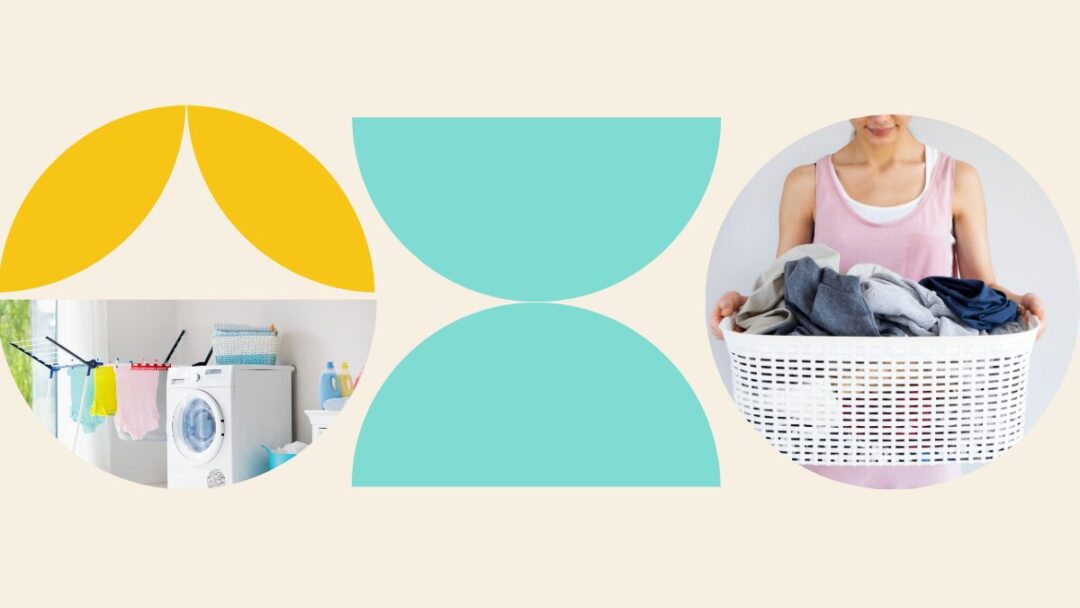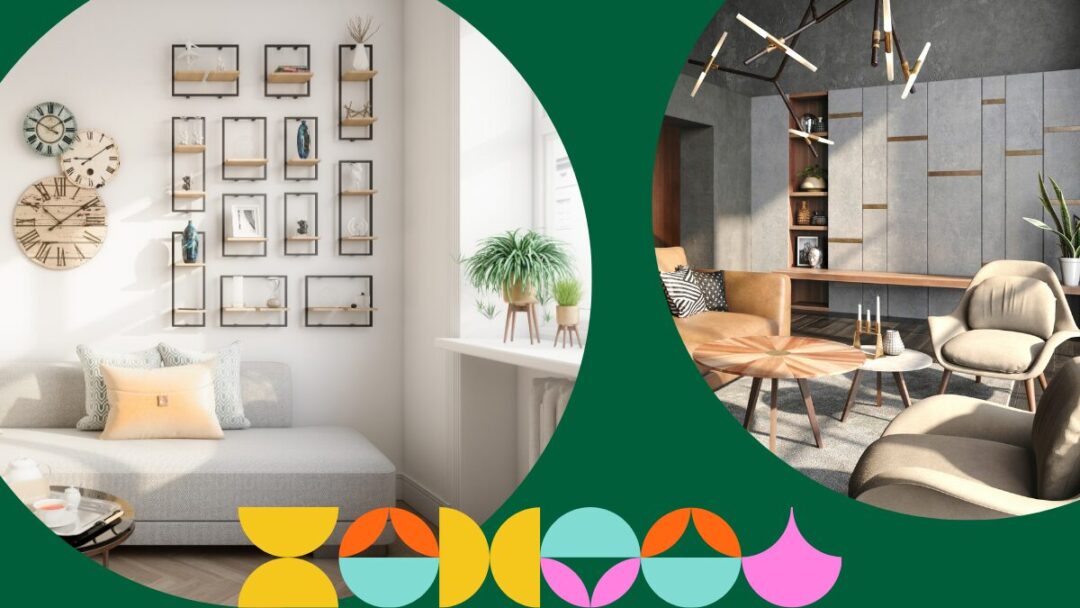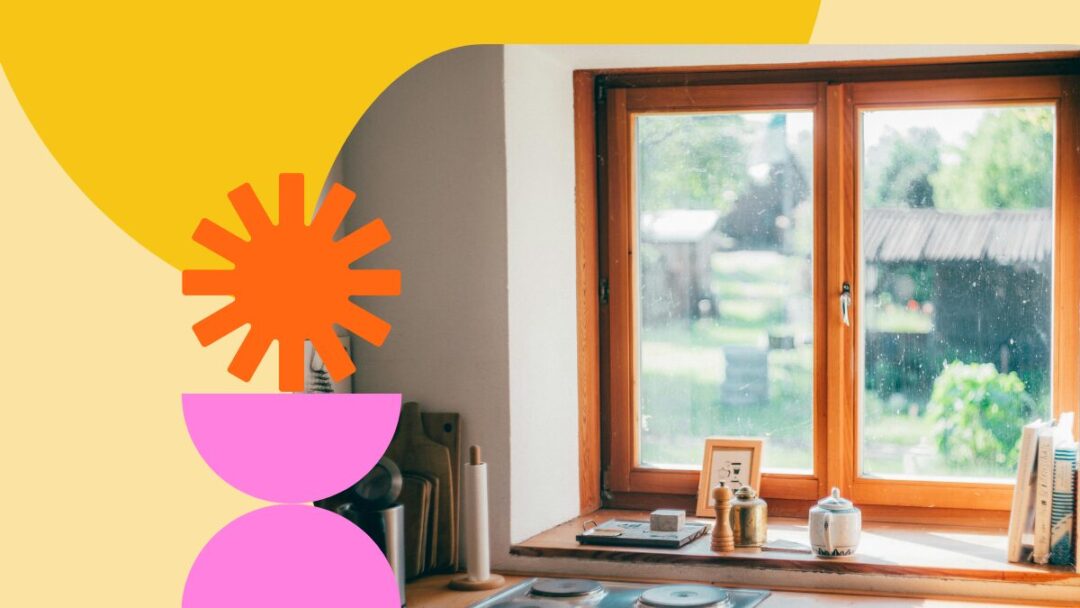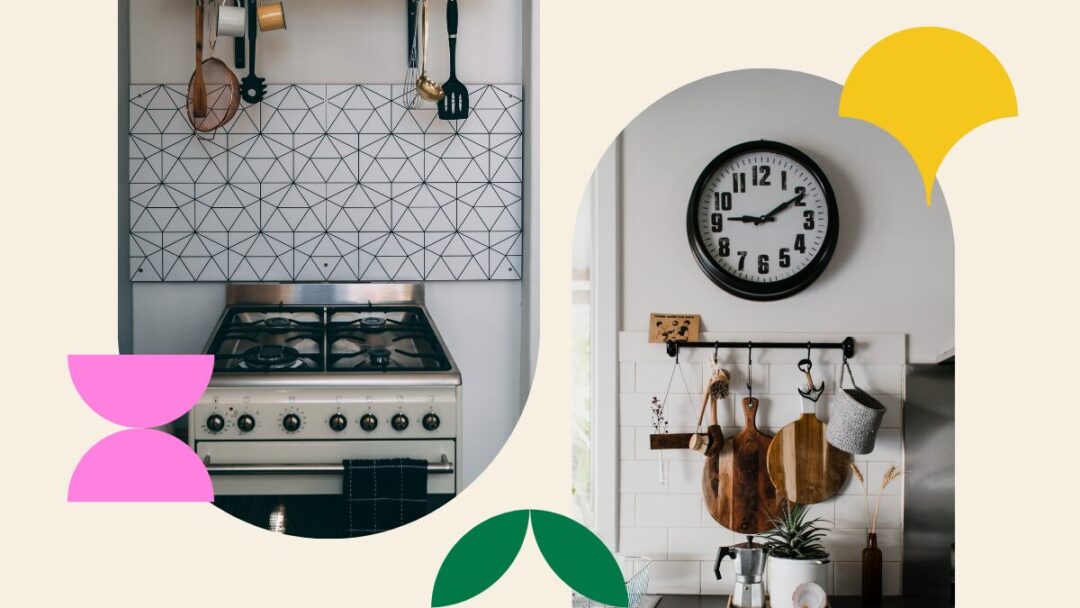The floor is simply the most underestimated element in your house. The majority of us don’t think about our floor or the different types of flooring there are until it’s time to renovate or upgrade flooring. Choosing flooring for places like the kitchen, bathroom and basement is a big investment.Our lifestyle, pets, kids, amount of traffic, room temperature, and exposure to sunlight are the most important deciding factors, so consideration of the pros and cons of the different flooring options is vital.
It’s not advised to make a final decision based on samples seen in a showroom as an entire floor of material sometimes looks different from how it appears as a showroom sample. This article will go over the various types of flooring, and what the best for your kitchen, bathroom and basement are.
For useful cleaning tips, head over to our blog where you will find guides on how to clean various areas of your home and more.
An Overview Of Different Types Of Flooring
If you have been shopping for new flooring, then you know just how overwhelming it can be, especially if you have no idea what to look for. We’ve come up with a quick guide to the best flooring ideas for your home.
Hardwood
Hardwood flooring is simply timeless. They give you a natural wood surface in a very wide range of colours, widths, and wood types. You’ll have the option to choose between solid or engineered wood. And of course, you have the choice of DIY installation or hiring a professional. Hardwood flooring can be installed in a certain pattern if you don’t want the planks to be placed straight – there are diagonal, herringbone, and other installation patterns seen in homes today. Mixing the plank width when installing is also a trend on the rise.
- Pros: Hardwood is easy to clean, durable, yet soft and smooth underfoot. It’s great for resale value, and can even be sanded and refinished to look brand new if it has worn down.
- Cons: Hardwood can, unfortunately, dent easily, and get scratched from grit. Solid wood can warp or swell with rises in heat, temperature, and humidity, which doesn’t make it very suitable for your bathroom, basement or kitchen. Some engineered floors can’t be refinished, and although they are resistant to moisture, they’re not completely waterproof. Hardwood is a more expensive flooring option.
Depending on how many people are in your house, whether you have children and so on, hardwood floors can be installed in the living room, bedrooms, and dining room. Some engineered wood floors are fine to be installed in kitchens and basements.
Laminate Floors
Laminate flooring is artificial and made from several layers with a surface designed to look like natural flooring material. Laminate flooring is the best way to go for an inexpensive hardwood-looking floor, they can be rather convincing in some instances. They also come in an array of colours and plank sizes. It is also common for those installing laminate floors to create a pattern with the flooring or mix up the plank sizes. With maintenance, these floors can last for years.
- Pros: Laminate flooring is easy to install DIY. These days laminates can be simply clicked together, and some choose to add some glue for them to be permanently glued down or floated, which means you can even install laminates over uneven subfloors. They are easy to clean and are also an all-around affordable flooring option.
- Cons: Laminate flooring may appear more artificial to some. They don’t always feel completely solid, they may sometimes click slightly or give way a little when you walk on them. These floors can become irreversibly damaged if water or liquid is spilt on them.
Laminate flooring is suitable for pretty much the whole house excluding the bathroom, laundry room, and sauna. But for your kitchen, bedrooms, dining room, living room and hallways, they can make a beautiful addition to your home.
Carpet
Carpet flooring is a soft, synthetic or natural material that comes out in many different styles, including cut pile, loop pile, multi-level loop pile, and cut and loop pile. Cut pile is soft, durable and luxurious, often recommended for high-traffic areas of your home. Loop pile is also durable and efficient for high-traffic areas. Multi-level loop pile carpet provides a casual, decorative style, and cut loop pile comes in a variety of textures, colours and patterns.
The range of carpet colours and fibres is vast – you can get nylon, wool, polyester and more, and you can find the style and aesthetic that suits your home.
- Pros: Carpet is soft and warm, and even dampens out some noise, which makes it one of the best types of flooring options for bedrooms and children’s play areas. Carpet is additionally one of the least expensive options you can choose for flooring. There are many options when it comes to choosing the colour, design and style. Carpets can last for decades if maintained properly.
- Cons: Carpets must be installed by a professional. They don’t necessarily add value to your home. Also, you may want to have a good think about carpet flooring in your home, particularly for allergy sufferers, as carpet fibres can collect pollen, dust, pet hair, odours and other harmful allergens. Cleaning carpets can also be a hassle in some instances.
Carpets are best installed in bedrooms, living rooms, hallways, stairs and basements, where moisture won’t cause any issues.
Vinyl Flooring
Vinyl flooring is very strong, durable and versatile. It can last for years if installed correctly and maintained. Vinyl flooring ranges from inexpensive and thin to high luxury vinyl that is well-padded. Vinyl floors are easy to install and resistant to stains, dents, and scratches, they are also the best option for those with pets.
- Pros: Vinyl floors are inexpensive, durable and simple for homeowners to install without any equipment or tools. They are available in many styles with different levels of quality, and can last for up to 25 years. Vinyl flooring can also mimic other materials such as wood and stone.
- Cons: Vinyl flooring is not likely to add much value to your property. Low-end vinyl flooring can often appear cheap, and removing vinyl flooring can be quite difficult.
Vinyl flooring is a suitable choice for most rooms of your home, including the kitchen, bedrooms, bathroom and basements.
Porcelain And Ceramic Tile Floors
Ceramic tiles are durable and made from clay that has been moulded and fired so that it resembles stone. Porcelain tiles are denser and even more durable, and even more water-resistant than ceramic tiles. This also makes them more expensive. Ceramic tiles are easier to install and more customisable when compared with porcelain tiles.
- Pros: Tiles are made to last a lifetime, they are the most cost-effective flooring option, and they are also the easiest to clean. Also, they range in styles and colours, making them great for customising your home.
- Cons: Tile floors can be cold underfoot and do not provide much sound dampening. They are also very difficult to install by yourself. Tiles can be heavy and rigid, and can crack without the correct underlay. With tiles, you will also need to keep the grout clean to keep your tiles looking fresh and new.
Tile floors can be installed in any room in your house.
Natural Stone
Natural stone tile is made from stone that’s been quarried, slabbed, finished and cut into size. Some of the most popular natural stones used for floors are granite, marble, limestone, slate and travertine.
- Pros: Natural stone flooring is environmentally friendly and durable with a pristine, high-end feel. Slate, marble, and granite floors can last for 100 years. You may want to consider using natural stone for outdoor areas like your patio or braai area.
- Cons: Natural stone floors are one of the most expensive flooring options. Some types of natural stone can be easily chipped, scratched, and stained, and can be a hassle to repair. Stone requires more care and maintenance than the other types of floors mentioned previously. Some types even have to be treated to make them waterproof.
Natural stones can be installed in any room in your home, but they are usually installed in kitchens and bathrooms. Natural stone is also a nice choice for your lappa, braai area or patio.
Concrete
Concrete is the foundation for most homes. Although it has an industrial, cold reputation, it can be finished to make a visually appealing floor. Concrete can be etched, polished or stained to suit any design or decorative style.
- Pros: Concrete flooring is durable, inexpensive and easy to keep clean and maintain. It can be finished in an array of styles. These floors can last for more than 50 years if they are properly installed and you keep up with the maintenance.
- Cons: These sorts of floors can be hard, cold and slippery. They must be installed properly from the get-go and resealed over time. Concrete can also settle or crack throughout the years.
Concrete can be installed in any room, particularly the laundry room, kitchen, bathroom and basement.
Bamboo Flooring
Bamboo floors can be as hard and durable as hardwood floors, while providing less variety in colours and styles than them. Bamboo is sleek and modern looking, and suits minimal, contemporary homes the most.
- Pros: Bamboo is a renewable material. These floors are easy to install, clean, maintain and refinish. They typically add value to your home and can last for more than 100 years, if taken care of.
- Cons: Moisture and humidity will damage bamboo floors quickly. They can also get scratched easily.
Bamboo floors are best installed in bedrooms, living rooms and hallways.
Flooring Ideas For Each Room
Do you know the basic rules of choosing the best flooring for your home? Here are room-by-room flooring options to help you choose the best flooring for your basements, kitchen, bathroom and more.
Best Flooring For Your Kitchen
The most suitable flooring options for your kitchen are ceramic or porcelain tile, laminate, hardwood, and vinyl planks. Kitchens do get a lot of traffic and a lot of attention, from spills and dropped utensils, to plenty of heat. Your kitchen floors should be a material that can withstand heavy wear. The best kitchen flooring is water-resistant, easy to clean, and attractive. You may want to choose polished concrete, tile or vinyl flooring. If you love natural stone, choose one that is water and stain-resistant.
Best Flooring For Your Basement
If your home has a basement, ideas for flooring materials that are the most suitable are concrete, vinyl, epoxy, carpet and engineered wood. Basements can sometimes be slightly difficult. Homeowners often convert their basements to living areas and choose carpets and hardwood flooring. But underground spaces tend to be damp and can easily become flooded with rain or pipes from the rest of the house. The first thing to keep in mind when looking for basement floors is to stick to materials that can withstand moisture. Just keep an idea in mind of how you want to use the basement and how often. Then, weigh up the cost of the flooring you would like to choose.
Best Flooring For The Bathroom
For your bathroom, the best flooring options to choose from are vinyl, engineered wood and cork. When choosing material for your bathroom floors, water resistance should be the number 1 priority. Porcelain, ceramic and stone tiles are great options for your bathroom. But if you want wood flooring in the bathroom, then choose engineered over solid wood. Or an even better option would be to choose water-resistant vinyl floors that mimic wooden flooring.
Best Flooring For A Garage
The best types of flooring for a garage are concrete, rubber tiles, epoxy coatings, and vinyl.
The best garage flooring options for a garage may vary, depending on how your garage is used. Many homeowners use concrete that’s painted or covered with epoxy coating. You may want to cover your concrete with rubber interlocking tiles or mats, designed for garage flooring.
Best Flooring For Your Living Room
The best options for your living room flooring are carpet, concrete, hardwood and natural stone.
Living rooms are mainly used for entertaining and spending time with the family. When choosing the floor for your living room, think about the look and feel of the room, and how you would like it to be. If you want a cosy, soft floor, then the obvious choice would be carpet. If you have pets or small children, a smoother surface may be easier to keep clean and maintain over a longer period.
Best Flooring For Bedrooms
Best flooring options for bedrooms are bamboo, carpet, hardwood, laminate, natural stone and vinyl.
When it comes to bedrooms, there are several options. Bedrooms generally have the lowest traffic in the house, it’s also where spills are less likely to take place. The best flooring for bedrooms would be the most comfortable material, and in textures and colours that you love, and are of course within budget.
Best Flooring For Dogs
For those with pets, particularly dogs, you should choose either tile, engineered wood, vinyl, bamboo, or cork. We all know our pets can wreck our flooring. Potty accidents stain carpets and their nails scratch laminate floors. Their hair shedding requires vacuuming multiple times a day. Dogs are a bit harder on floors than cats, so dog lovers should consider tile, engineered wood and vinyl flooring.
Remember, the best flooring for pets overall is going to be the one that’s the easiest to clean, durable and stain-resistant. Ceramic tile and natural stone are super strong, durable and easy to clean. Bamboo and engineered hardwood flooring are scratch-resistant and easy to clean. Vinyl flooring is also durable, a breeze to clean, and affordable.
We hope that this guide will help you when planning an upgrade of your flooring. One thing to consider when looking for flooring is size – for smaller rooms, you can let your decorative side run wild, so why not experiment with pattern tile? This will not only create a unique flooring space, but it will also help to make your space look larger. Don’t be afraid to go bold, try out new styles that you like, even if they are different or unusual to what you usually go for.
